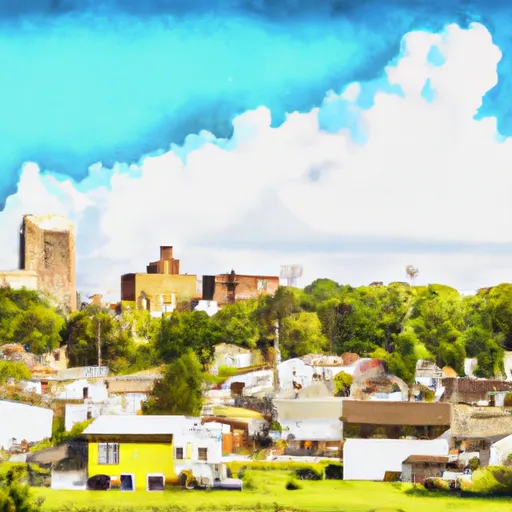-
 Snoflo Premium
Snoflo Premium
Get unlimited access to all our content
With no Ad interruptions! - Start Your Free Trial Login with existing account
Laurelville
Eden Index
Climate
8.3
•
Recreation
2.8
•
Community
0.9
•
Safeguard
4.5/10

Laurelville, Ohio is a small village located in the southeastern part of the state. The town experiences a humid continental climate, characterized by hot summers and cold winters. Average summer temperatures range from the mid-70s to low 80s Fahrenheit, while winter temperatures can drop to the mid-20s. Precipitation is evenly distributed throughout the year, with an average annual rainfall of about 40 inches.
Laurelville is surrounded by natural beauty, with the Hocking Hills State Park just a short drive away. This park offers various outdoor recreational opportunities, including hiking, camping, fishing, and wildlife viewing. The region is known for its stunning sandstone cliffs, waterfalls, and lush forests. Visitors can explore numerous hiking trails that wind through picturesque landscapes, such as Old Man's Cave and Ash Cave.
In terms of hydrology constituents, Laurelville benefits from the proximity to the Hocking River, which flows nearby. The river provides opportunities for boating, canoeing, and fishing. Outdoor enthusiasts can enjoy the serene waters and abundant wildlife that call the Hocking River home.
Overall, Laurelville, Ohio offers a quaint village atmosphere, coupled with access to beautiful natural surroundings and a range of outdoor activities for residents and visitors alike.
What is the Eden Index?
The Snoflo Eden Index serves as a comprehensive rating system for regions, evaluating their desirability through a holistic assessment of climate health, outdoor recreation opportunities, and natural disaster risk, acknowledging the profound impact of these factors on livability and well-being.
Climate Health Indicator (CHI): 8.3
Laurelville receives approximately
1025mm of rain per year,
with humidity levels near 86%
and air temperatures averaging around
11°C.
Laurelville has a plant hardyness factor of
6, meaning
plants and agriculture in this region thrive during a short period during spring and early summer. Most
plants will die off during the colder winter months.
By considering the ideal temperature range, reliable water supplies, clean air, and stable seasonal rain or snowpacks, the Climate Health Indicator (CHI) underscores the significance of a healthy climate as the foundation for quality living.
A healthy climate is paramount for ensuring a high quality of life and livability in a region, fostering both physical well-being and environmental harmony. This can be characterized by ideal temperatures, reliable access to water supplies, clean air, and consistent seasonal rain or snowpacks.
Weather Forecast
Streamflow Conditions
Scioto
Area Rivers
Scioto
Snowpack Depths
Scioto
Reservoir Storage Capacity
Scioto
Groundwater Levels
Recreational Opportunity Index (ROI): 2.8
The Recreational Opportunity Index (ROI) recognizes the value of outdoor recreational options, such as parks, hiking trails, camping sites, and fishing spots, while acknowledging that climate plays a pivotal role in ensuring the comfort and consistency of these experiences.
Access to outdoor recreational opportunities, encompassing activities such as parks, hiking, camping, and fishing, is crucial for overall well-being, and the climate plays a pivotal role in enabling and enhancing these experiences, ensuring that individuals can engage in nature-based activities comfortably and consistently.
Camping Areas
| Campground | Campsites | Reservations | Toilets | Showers | Elevation |
|---|---|---|---|---|---|
| Paintsville Lake State Park | 40 | 618 ft |
Nearby Ski Areas
Catastrophe Safeguard Index (CSI):
The Catastrophe Safeguard Index (CSI) recognizes that natural disaster risk, encompassing floods, fires, hurricanes, and tornadoes, can drastically affect safety and the overall appeal of an area.
The level of natural disaster risk in a region significantly affects safety and the overall livability, with climate change amplifying these risks by potentially increasing the frequency and intensity of events like floods, fires, hurricanes, and tornadoes, thereby posing substantial challenges to community resilience and well-being.
Community Resilience Indicator (CRI): 0.9
The Community Resilience Indicator (CRI) recognizes that education, healthcare, and socioeconomics are crucial to the well-being of a region. The CRI acknowledges the profound impact of these elements on residents' overall quality of life. By evaluating educational resources, healthcare accessibility, and economic inclusivity, the index captures the essential aspects that contribute to a thriving community, fostering resident satisfaction, equity, and social cohesion.

